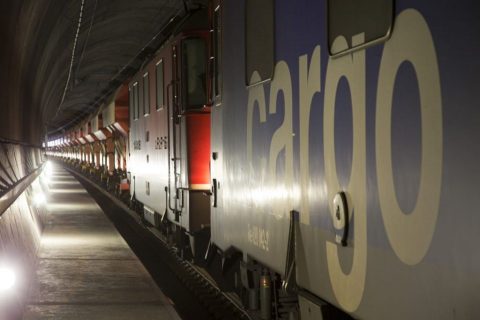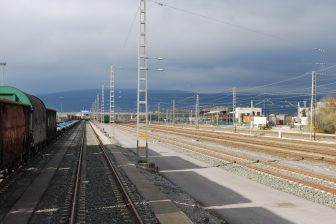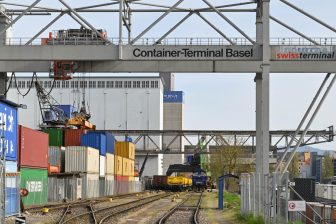
Green light for new Gotthard freight timetable
A streamlined new rail freight timetable forms part of the new Gotthard Tunnel link between Switzerland and Italy which launches commercial services on Sunday. Cargo customers will benefit from a faster service with more overnight express shipments.
Two decades in its construction, the 57km (35-mile) twin-bore tunnel – the longest railway tunnel in the world – provides a high-speed rail link under the Swiss Alps between northern and southern Europe and is set to revolutionise European freight transport. Goods currently carried on the route by a million lorries a year will now go by train.
Marshalling yards
Around 160 freight trains can currently travel on the Gotthard north-south axis daily, but from the start of the new timetable on December 11th, this will increase to 210. Swiss rail operator SBB, which accounts for around a quarter of all the country’s road/rail transport volume, is also making improvements to its freight capacity.
SBB Cargo says customers will receive efficient, congestion-free and environment-friendly solutions for their logistics requirements. With up to 750-metre-long trains, SBB Cargo will be able to operate even more efficiently. As of the 2016/2017 timetable change, up to give freight trains will be able to run every hour in each direction – almost twice as many as today.
Up to three deliveries and collections will thus be made every day at busy operating points in Ticino. Successful test runs were held last week and the first official service, a special train with both passenger and freight wagons, departs from Basel at 4.55am on Sunday December 11th.
Train protection software
Bombardier Transportation has confirmed that its Bombardier Traxx locomotives, which have been upgraded with the latest automatic train protection software, have been approved for operation on the new tunnel. It is a partnership that also involves the Swiss Federal Office of Transport (FOT), SBB Infra and BLS Cargo.
Albert Bastius, Head of Product Line Locomotives at Bombardier, said: “We thank the FOT, SBB Infra and BLS Cargo for the constructive teamwork that will enable our TRAXX locomotives to operate reliably and efficiently in the Gotthard Base Tunnel. We are now continuing to see that the implementation of our latest software progresses well on the many locomotives in operation, so that our customers benefit from this updated version.”
Flat rail route
For international transit traffic, the new Gotthard Base Tunnel marks a first major step towards the flat rail route through the Alps. With the Ceneri Base Tunnel, which will be an important feeder in the south for Gotthard, and the 4-metre corridor (for transporting 4-metre-high semi-trailers by train), rail will become significantly more competitive on the north-south European rail corridor. From the end of 2020, freight trains will be able to transport up to 2,000 tonnes instead of the 1,600 or so tonnes that they do today.





